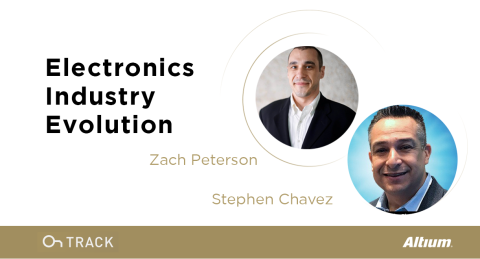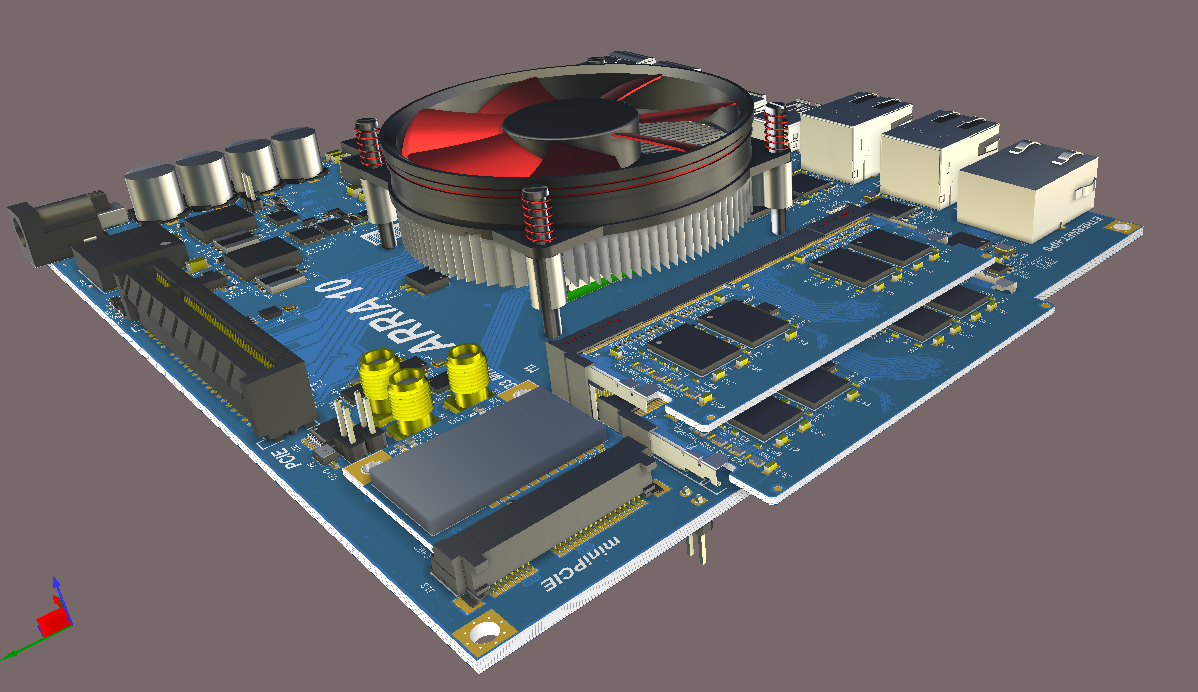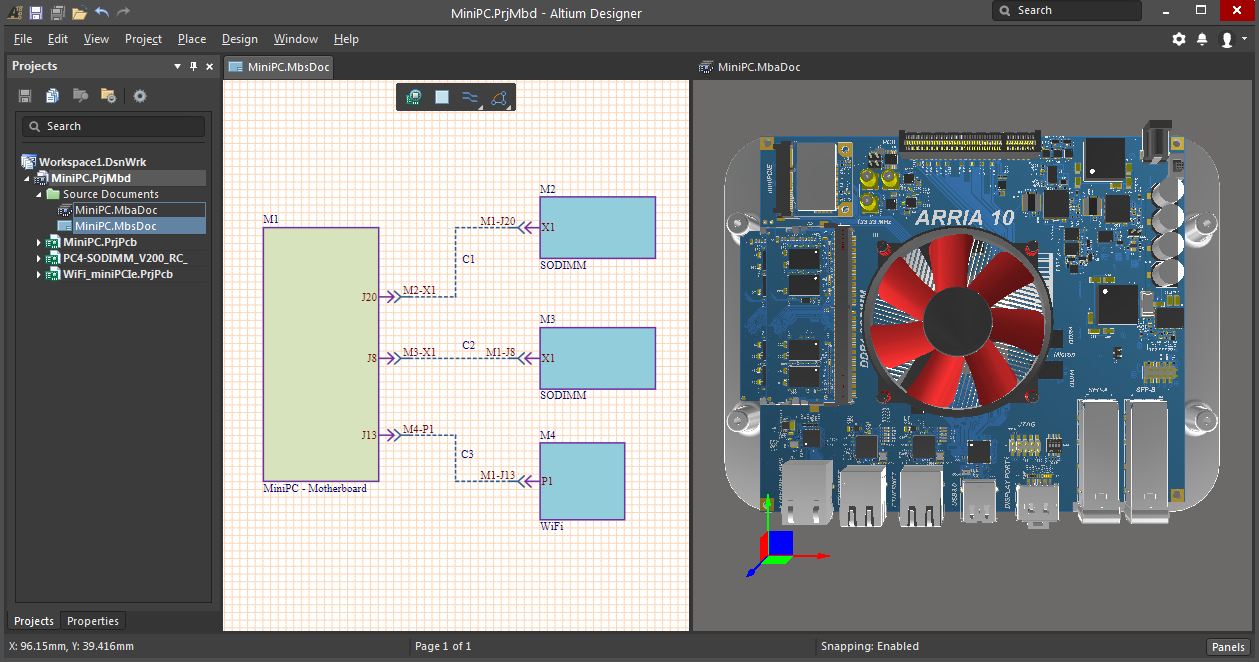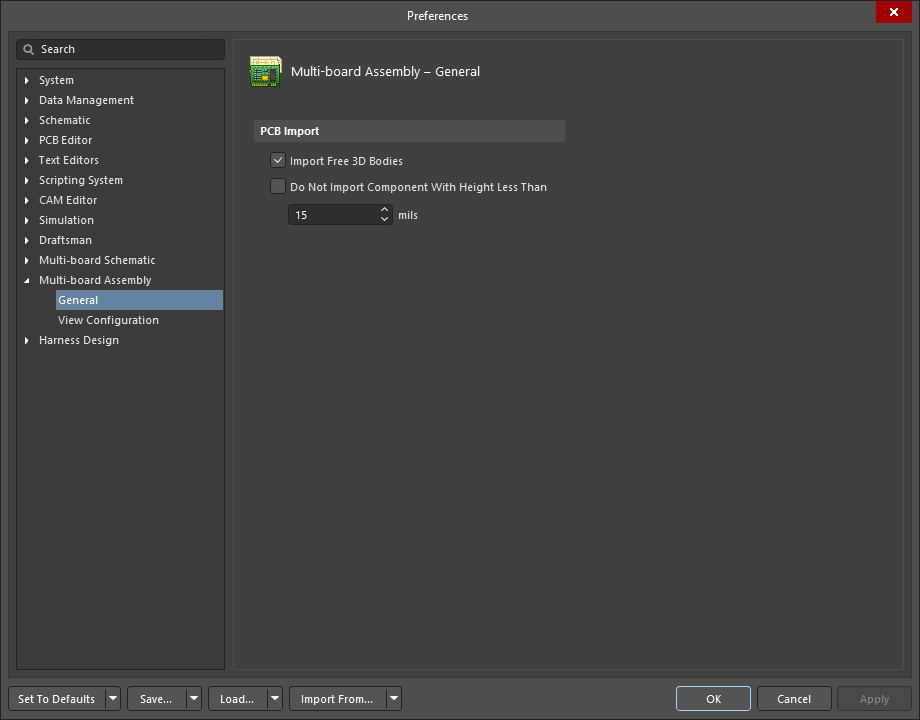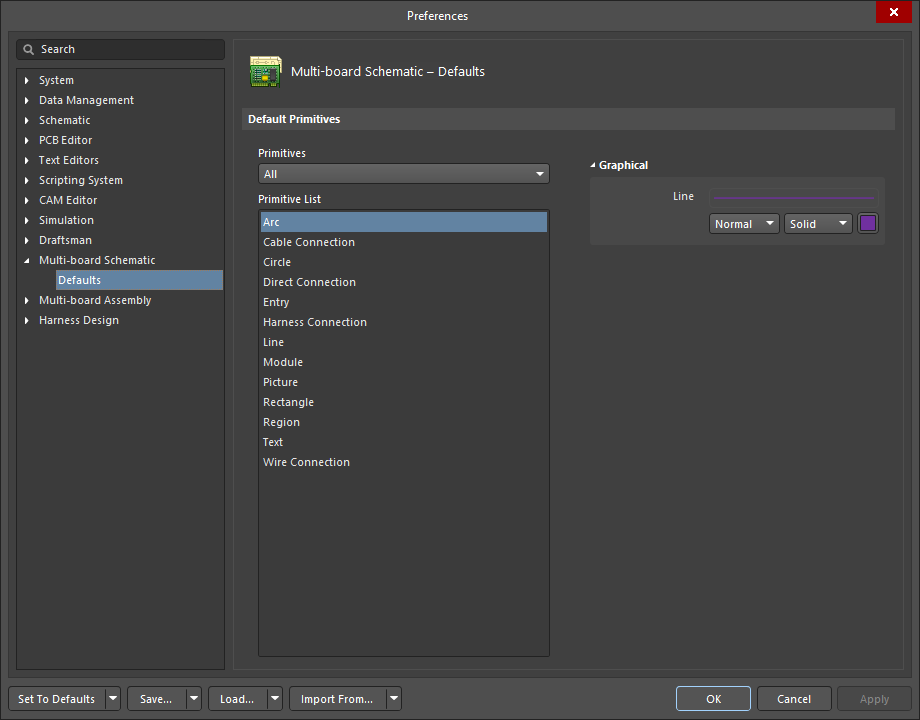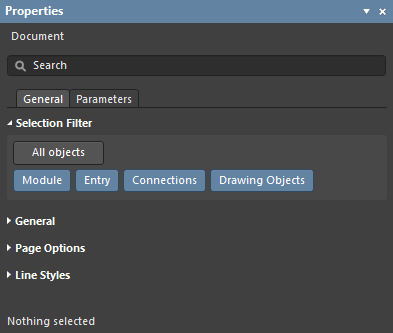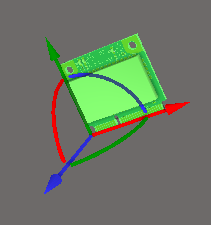The Square Kilometre Array Telescope and Multi-board PCB Design
Omer Magoub, Electrical Engineer for the Square Kilometre Array (SKA) Africa talks about the project and shares how he got started in the field of PCB Design. Join Omer and Judy Warner for a conversation on Multi-board PCB design in the context of extremely sensitive devices.
Listen to the Podcast:
Download this episode (right click and save)
Show Highlights:
-
The goal of the Square Kilometre Array is to be the largest radio telescope in operation.
-
Bigger and more sensitive
-
Project scope - built in South Africa and Australia
-
Mercat is 64 / 25% of project - Phase 1
-
Next phase - Australia 158 low frequency range antennas
-
Multitudes of BGA Fanouts, tight pitches, narrow tracks, etc.
-
Extremely sensitive device, signal integrity is crucial
-
One aspect of project is to develop local economy, so we are working with local manufacturers to improve manufacturing technology. There is a lot of giving back involved in this project.
Links and Resources:
Omer comedic AltiumLive presentation recording
Omer’s AltiumLive presentation slides
Trade In Your Outdated PCB Design Tool & Unlock 45% OFF Altium today!
Transcript:
Hi this is Judy Warner. I'm so excited to introduce you to another AltiumLive 17 Alumni speaker which is Omer Mahgoub from SKA in South Africa and he has been designing really complex boards for the SKA - which is the Square Kilometre Array - telescope and I'm gonna get out of the way and let Omer tell you a little bit about the SKA if it's something you don't know about.
So, Omer welcome and thank you so much for taking the time to tell us a little bit about your work.
Hi Judy thanks for having me, it's a pleasure to be here thank you to the SKA - which stands for the Square Kilometre Array. She SKA is a radio telescope project that's currently being built in South Africa and Australia and its goal is to be the world's largest radio telescope upon completion. I'm not sure if the listeners are familiar with what a radio telescope is but essentially, as opposed to an optical telescope, which is what most people are used to, and you look through to see the Stars and the planets. The sky a radio telescope receives radio signals. So in essence it's a large satellite receiving radio signals.
Okay. So tell us the purpose of the data you're collecting in those large receivers - what type of data they're receiving and what the purpose is?
Okay. So there are different purposes for radio telescopes. One of the main reasons is to observe the galaxy and to understand how the galaxy was formed and to understand how galaxies evolve today. Also, how they rotate and also their location, what has shaped them, and so on. Also to track new galaxies that are forming and to just map that journey. There are other purposes for example to study the earth’s magnetic fields that help guide birds and bees and compass needles and also to study interstellar gases. Another reason which most people might be interested in, is also to detect other types of life out there. Not necessarily aliens, but any any objects which might be occurring in distant planets.
Mm-hmm fascinating.
So, all the big questions of life.
That’s exactly it and which is why a lot of questions have not been answered so far by existing telescopes which is why we need to go bigger and more sensitive.
So tell us a little bit about the scope of this project. I know it's massive - and what of the SKA are up already and when is the due date that they feel this will be completed?
Okay so, initially when this project was started it was going to be a big process between different countries for the hosting of the telescope itself. Of the location of the telescope and so initially, the three countries that were supposed to get to be hosts were Argentina, South Africa, and Australia. South Africa and Australia, their bid went ahead and it was between the two of them and it was eventually decided that both South Africa and Australia would host this. So the actual location of the telescope will be in both South Africa and in Australia. There are a number of member countries involved in this project since it's an international consortium of countries such as Brazil, France, Japan, Malta, South Korea, Poland, Portugal, Russia, and Spain. African countries as well as Botswana, Ghana, Kenya, Madagascar, Mauritius Mozambique, Namibia and Zambia. So one source in South Africa who were bidding - they had to build, what they call pathfinders or cursor telescopes - to prove that they were capable of this. So the significant project at the time was called Meerkat which is what we are currently busy with here in South Africa and by March or April of this year that should consist of at least 64 receivers or telescopes. And then this will essentially be phase one of SKA.
Ok so Meerkat is those 64 telescopes?
Yes.
Okay with 64 telescopes making up phase 1, which towards the end should have at least 200 dishes.
So 64 is quite a quite a bit of the project really? I mean it's what - yes over 25 percent of the total project?
Yes.
Yes so, that’s for phase 1. Just to explain a bit further between the two phases. For phase 1 there will be the 200 issues including 64 Meerkat dishes but in Australia it will be 150 000 antennas for a low frequency range. So the frequency range for meerkat is between 350 to 14 gigahertz and then the low frequency antennas in Australia will be between 50 megahertz and 350 megahertz that's a lot of power.
I can imagine the boards that you make - right away my mind goes to the boards and is that just antennas? The antenna portions of the board I mean, this is kind of a novice question but how do you achieve that kind of power?
So just to explain a bit further on where I'm based with the team in South Africa. We work on what is called the digital back-end and what the back-end is responsible for is that it basically is to receive the incoming radio signals from the dish which are analog signals and essentially digitizes so you can imagine our boards are mostly to digitize these signals and just perform the processing in them.
Okay understood, very good. Going onto - so since you're doing it would it be fair to say that what you're doing there in South Africa and just sort of a little bit of the heavy lifting of this project then?
Yes you could say that.
Yeah, so tell us a little bit about specific challenges of designing these boards. I know before we got on the phone you were talking specifically about BGA fan outs. Can you talk about that and and what kind of size BGA's that you typically work with and then how you address the fan outs for those?
For those we deal with a lot of FPGA processing boards and a very high density board. Very high density BGA is starting from around 600 all the way to over thousand volts. Very, very narrow pitches of less than a millimeter point six, and six millimeters so it becomes very challenging to fan out and route all the signals in between which is why I was really glad to see all the advances on Altium 18 during the summit last year which would have made our work tremendously easier and thinner.
Yes.
But we will definitely be using those and so that's one of our biggest challenges - definitely to fan out signals and the multitudes of high-speed signals that we have running on these boards.
Have you have you had the opportunity yet to transition to Altium 18?
Uhm, not yet because we're still creating our existing designs on the existing version of Altium but for which every new design that we’ll be moving onto we will definitely be on Altium 18.
Okay those are really tight pitches and I don't know how you guys do that honestly! It boggles my mind that's incredible! So talk a little bit more about the high-speed signalling and what kind of challenges that poses for you and and how you address them?
So some of the biggest challenges of this telescope is that it's an extremely sensitive device so signal integrity is crucial for our boards. And one of the main issues we have especially in South Africa, is manufacturing capability because the electronics industry is not very big here. So having to send out a board with such narrow tracks and with these kind of technicalities - a lot of our local manufacturers are unable to actually manufacture them - so it becomes really tricky because another aspect of the project is also to help develop the local economy. So we've been working very closely with some local manufacturers to help them get the equipment and expertise to be able to manufacture these kind of boards.
Yes, so tell me a little bit more about that. As one from the bare board industry and where I was focused on actually high-speed boards for a long time, that's really fascinating to me because these boards are not easily made and there's not that many in the whole wide world actually that can build consistently and reliably in that sort of phase you're talking about. So how do you go about and and where's the funding and how does that all work?
So, for example, some of our latest boards had buried vias buried and blind vias, and the manufacturers here do not have the equipment to be able to manufacture or to be able to make those. Some of them who can were able to get some government grants to buy some new equipment specifically for this project. So we were very happy to have that. Even the etching process for these narrow tracks is also quite complicated as opposed to your regular levels.
Mm-hmm.
Though as they are getting up to speed some of our initial board that we needed unfortunately had to be manufactured in China because we needed the quantities. But for the boards for which we were still prototyping we were able to successfully manufacture those here in South Africa and we were quite pleased with the results.
Oh that's wonderful! I love to hear that you're able to help through the SKA, help grow the economy and bring some technology there, that's very exciting.
Yes that that was one of the critical aspects of the SKA because the location of the SKA is also good, because you need a very radio quiet zone with no cell phone interference and that sort of thing. So it's actually based in the middle of the desert and that's also how the location has helped to uplift the community because now, you know, schools get to benefit from that a lot of extra jobs are created as well so there there is a lot of giving back involved with this project.
I love that, oh that's really great news - and you know, sometimes people say, well why go to space? Why build things like SKA?
Yes a lot of people always tell me, why is so much money being spent on this, when it can be spent on housing or help to fight poverty, without realizing that this does actually help people to uplift themselves.
I couldn't have said it better because what you realize is, when you do start doing some of these things, not only is the data that you will collect helpful and us really understanding the universe and probably have practical applications. It does really help fuel communities and put people to work and grow your seed community. So I think that's a really lovely backstory.
I think there's been thousands of scholarships already for people to get into science and engineering from this project.
Tell me a little bit more about that?
So a lot of times people, for example from the town, where the telescope is based, a lot of student’s studies are being paid for and all of them are being sponsored to attend University especially in the STEM fields. Because once this budget is complete we are going to need a lot of astronomers and engineers to work on this telescope because this is a very long-term project. I mean it's only expected to be completed around 2024 so, by that time we would need to develop the skills for people to use this and to maintain it.
That's incredible. So speaking of students how in the world does Omer Mahgoub from South Africa end up working on the SKA? You know, based in a remote area. Tell us a little bit about you and how you came to the field that you are?
All right so I studied electronic engineering, at the University of Pretoria which is about 1,500 kilometres from here, from Cape Town, and I was previously working in the electronic defense industry - about four or five years - and then I think at some point my CV was online and I wasn’t actively looking for a job, but my CV just happened to be online and I was contacted for this. And since this was in a different town, I wasn't really considering moving at the time, but I just decided to go for the interview anyway and once I got it, I started to seriously consider it and I saw what a great opportunity it would be, and I decided to accept. And it's been six years now.
That's a great story. So Omar do you remember being a kid and kind of naturally being drawn to how things worked and how did you know to choose that major?
So, I was always interested in gadgets and was something that I enjoyed. I enjoyed gadgets - but I feel like my parents actually fooled me into studying engineering because as a kid, I used to love the TV show MacGyver and I would always ask my parents, like you know, what do you see? What did he do? And they would tell me, no he's an engineer that's what his job is, and ever since then I had wanted to study engineering and it was only later on that I realized that they had actually lied to me.
God bless parents.
Yeah.
But I'm glad that they did.
Yeah well, you obviously wouldn't have lasted long if you didn't have sort of a propensity for it. So they must have heard something right? I knew a fellow, Omar, that told me once he was an electrical engineer and he was part of the early development of chips and that actually, just the 256 K chip, you know, way back in the olden days and he was from a small town in the Midwest and he saw some men climbing telephone poles and he asked his parents, what does that guy do? And they said he's an engineer so he's like, that's what I'm gonna do, I'll be an engineer. Because he wanted to climb telephone poles. Then he got to college and he's like, you people are never gonna let me climb my telephone pole are you? But then he ended up being quite a genius guy developing chips.
So hopefully he’ll get to climbing.
His son went to Princeton, I think there was some brains in that family by the way. So yeah, I don't know that he ever got to climb a telephone pole! So, well can you share some websites cause I'm sure there are some incredible photos. I know I've seen some let's share the websites where people can go both to your local website and to the the international website.
So our local website, SKA Africa is at www.SKA.co.za and the International site is https://www.skatelescope.org.
Very good. So I always ask people at the end of this podcast is that you're now shifting to what I call ‘designers after hours’ so I think there's a lot of artistry and creativity in designers like you. So what kind of interesting hobbies or things do you do in your spare time?
In my spare time I - well naturally I enjoy video games - I love playing video games and I'd like to consider myself to be a sporty person. I love playing tennis and soccer. I try to play at least three to four times a week. The thing is that I try to stay active you know, especially after sitting in an office all day, staring at your computer screen.
Yeah that totally makes sense. What would you say; would you say you were a geek or a nerd?
I would say neither, but perhaps more of a nerd.
Well you're more of a nerd, well probably with the stuff you're working on?
I'm not gonna argue with that one.
Well it's been a delight to speak with you Omer. Is there anything else you'd like to share that we haven't covered perhaps?
No not really, but I just want to say that I'm really excited about getting to use Altium 18. I'm so envious after having seen all the videos. I've actually installed it and played it on repeat but I'm looking forward to using it and seeing how easy it will make my future designs.
Well we're excited for you to use it also and we hope that you'll have the opportunity to come back to AltiumLive 18. We will make sure to post Omer’s presentation below where he spoke and had some incredible slides. And not only that, he was like a stand-up comedian and I stepped into his session and I was trying hard not to laugh really loud because they were filming. But he’s been the straight man during this call but he was really funny. Like tell the audience why the United States is not part of SKA?
That was not supposed to have been - I still don't know how I didn't remove that!
I love it, no tell us...
So the United States they're even they they're not part of the SKA is because they would have insisted that it be called the Point Three Eight Six Square Mile Ratio.
It's too wordy.
Yeah SKA, it's way easier.
Yeah well, we will definitely post your your presentation below, both the video and your slide deck because there are some beautiful photos in your slide deck that show some radio telescopes and some sites that are really inspiring. And the scope; it boggles the mind, so we will be sure to share that.
So Omer, thank you again so much for sharing your experience with us and we hope to talk to you soon. Especially after you've gotten onto Altium Designer 18 and give us some feedback so we can make it better.
Definitely will do, I'll try to find some bugs.
Okay it's on!
Thank you Judy.
Thank you so much, this has been Judy Warner with the OnTrack podcast. Thank you for joining us and we look forward to seeing you next time and until then always remember to stay OnTrack.
Click here to view all Episodes
Or click here to access the Altium Free Trial Today.

